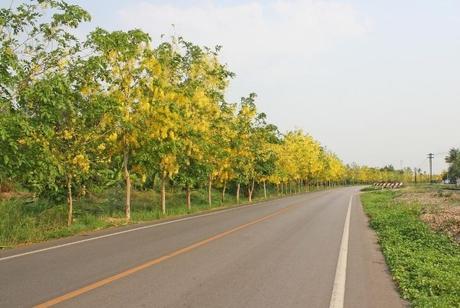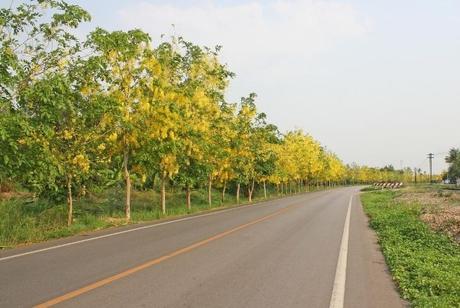Can Trees Reduce Noise Pollution?
We live not-so-quietly in a noisy world, and much of the noise pollution is man-made. Industries, mining, household chores, traffic – it’s a constant barrage of high pitches. Noise is now seen as a factor in a range of health issues, including cardiac diseases.
For many of us, the concept of noise pollution and its effect is limited to humans. But that’s not the case – it is equally harmful to plants and animals, too. According to the National Park Service (NPS) in the United States, noise pollution is a serious threat to the environment. Experts say noise pollution can interfere directly or indirectly with plants and can even hasten the extinction of some species in another century.

Here are some of the most common questions related to noise pollution and plant world, along with research-backed explanations.
Can Trees Actually Reduce Noise Pollution? (Study by EPA)
A noisy environment jeopardizes peace and makes people feel awful. It is also regarded as a form of environmental pollution and is also a health concern. Lucky for us, we have millions of trees, the ‘natural noise blockers’. Trees not only absorb carbon dioxide, give shade, avoid soil erosion, but they also act as buffers and filter out the annoying urban noise.
A U.S. Department of Energy study reports that trees and shrubs can reduce noise levels by 50 percent as perceived by the human ear.
How Do Trees Reduce Noise Pollution?
Trees act as noise barriers and reduce pollution through a phenomenon called sound attenuation, which is the damping of sound. In general, noise attenuation happens when sound waves dissipate over longer distances until there’s no energy is left to vibrate the air. Trees attenuate noise by absorption, deflection, refraction, and masking.
- Noise absorption by plants: Tree parts such as stems, leaves, branches, and wood absorb sound waves. Thick, rough bark and fleshy leaves are particularly most effective at sound absorption due to their dynamic surface area. In the case of shrubs, their size matters.
- Sound deflection by plants: When sound waves hit the massive tree trunks, the trunks do not vibrate because they are rigid. Sound waves are reflected off the trunks and back toward the source. Whereas when sound hits a flexible surface like leaves, leaves will vibrate and sound waves are transformed into other energy forms. It can also change the phase of a sound, which can cause interference in sound waves and a reduction in noise.
- Sound refraction by plants: As we know sound waves can be refracted. For example, if sound hit on solid floors, the waves bounce all over and create echoes; and with carpeting, the echoes disappear. Ground covering plants, vines on walls, and green walls help achieve the same effect.
- Sound masking by plants: Trees mask annoying noise when branches sway, leaves rustle or stems creak. Trees and shrubs also attract birds and squirrels, whose chirping and squeaking helps with masking noise pollution.
As a general rule, the more surfaces (leaves, needles, and branches in the tree), the better the noise reduction will be. Tanaka et al found that broadleaved trees are more effective in blocking noise than needle-leaf trees. Some studies also indicated that the greatest noise reduction happens at the ground level, especially in woodlands. This implies that a good noise barrier must be a mix of trees, shrubs and ground cover plantings
How Much Noise do Trees Block?
The percentage of noise control a tree can provide depends on several factors: i) intensity, frequency, and direction of the sound and ii) location, height, width, and density of the tree. However, as a rule of thumb, a tree barrier with an open distance of 100 feet can reduce sound by 21dB. Research shows that soft ground surfaces attenuate low-frequency noise, while trees and shrubs attenuate high frequencies.
Published results by Huddart show that noise can be reduced by 6dB over a distance of 30 m when the noise barrier is dense with vegetation. Another study concluded that a dense tree-shrub belt of 15-30 m wide could reduce noise levels by 6-10 dB.
Sound attenuation studies on traffic noise screening indicate that foliage can reduce frequencies in the range 250 Hz to 2000 Hz or above. The same studies showed tree trunks scattered the mid frequencies. Since most traffic noise peaks at mid-frequencies (1000 – 2000Hz), a dense noise barrier is suggested to attain effective noise reduction. The research also concluded that a 30 m dense plantation can give a noise reduction of 6dB.
Jeffrey Peng et al showed that a noise reduction of 2-3dB and 7dB when eucalyptus tree barriers are at 10-20m and 120m respectively. According to North Carolina State University studies, a 100-foot row of 45-foot trees can cut noise pollution by half.
Do Trees Get Affected by Noise Pollution?
Noise pollution changes the way humans, birds, and animals behave and plants are no exception. Since plants can’t move or migrate, they depend on insects, birds, and animals for pollen transfer and seed dispersal. But birds and many pollinator specie are adapting to noise pollution by changing migratory patterns or moving to quite locales. The result – loss of landscape, crowding, and competition for light, water, nutrients and space, and loss of species.
Research shows that plants respond to elevated noise levels in different ways. Gagliano et al. found that frequencies of 100-300 Hz can induce structural responses in Zea mays. They also found that it can affect transcriptional levels in plants.
Margaret E Collins and John E K Foreman found that Beans and Impatiens – two of the fastest-growing plants – when treated with wideband noises slowed down their growth. This finding also raised questions about the role of noise pollution and the developmental aspects of plants.
Studies on pollinating and seed foraging behavior of piñon and juniper trees at noisy sites in New Mexico, USA found a complex effect on plant growth. For this, scientists used noisy sites with compressors that produce 95dB sound, and ‘quite’ control sites without compressors were used. They found four-fold growth in piñon seedlings at quite sites compared to noisy sites.
Clinton D. Francis et al., from the National Evolutionary Synthesis Center in North Carolina has investigated the effect of elevated noise levels on pollination rates by hummingbirds and P. edulis seed dispersal. The results indicated an indirect positive effect on pollination by hummingbirds, but an indirect negative effect on P. edulis seed dispersal.
Which Trees are Best For Noise Reduction?
The U.S. Environmental Protection Agency says planting evergreen trees and shrubs can block urban noise by 3 -5 dB. Plus, it is a bonus to beautify backyards, gardens, and highways.
Magnolias
Southern Magnolia (Magnolia grandiflora ‘Hasse’) is the popular sound attenuator of the Magnolia genus. The hardy tree grows up to 50 feet and has dense foliage – perfect to block many hundred decibels of traffic noise levels.
Hardy Evergreens
Evergreens are the best noise blocker. They are dense, grow faster, and acts as year-round noise filters. Some of the excellent evergreens offering noise reduction are,
- Leyland Cypress: Known for their rapid and thick growth – 3 to 4 feet/year. They stay green year-round, are drought-tolerant, and thrives quite easily in both sand clay. The tree’s thick growth block out most of the noise from urban areas.
- Pittosporum: Pittosporum genus includes densely foliaged, thick, tolerant evergreens that can grow up to 35 feet. Two popular examples that reduce noise are i) Pittosporum undulatum – an Australian native with hardy branches, lustrous leaves, and white flowers. Ii) Pittosporum eugenioides – grow well in moist soil, this one has thick, glossy leaves that can absorb noises.
- Abies: Members of the Abies genus grow with dense foliage. Santa Lucia fir (Abies bracteata) is a popular and rare fir that moist, acidic soils of California. This conifer with dark needles grows to 80 feet tall, is hardy, and effectively reduces noise pollution.
- Arborvitae: They are slimmer than Leyland cypress but equally effective in drowning out elevated noise levels. For effective noise reduction, the trees need to be planted 3-4 feet apart.
Shrubs
Many shrubs offer good potential as noise-screening plantings. Some of the ideal names are,
- Hollies: Holy bushes are excellent in reducing noise at the ground level. They are thicker and have lots of branches and large leaves – ideal factors to attenuate as much noise as possible. Examples: Oakleaf Holly and Dwarf Buford Holly. Both show dense growth pattern, so when planted as a hedge, they will block noises pretty well.
- Spruce: They are also evergreens and there are many types to choose from. The Globe Blue is considered best for warmer climates whereas Fat Cat Norway is ideal for colder climates.
- Indian Hawthorn: This glossy, dark green foliage is a great antidote for elevated noise levels. With decorative flowers, bluish-black berries, and rounded shape, it serves a decorative plant as well.
References:
http://www.linv.org/images/papers_pdf/1-s2.0-s1360138512000544-main.pdf
https://pdfs.semanticscholar.org/47ff/6e79f2c15bf9508656bcf145d924a61b8f82.pdf
https://royalsocietypublishing.org/doi/full/10.1098/rspb.2012.0230
https://link.springer.com/article/10.1007/s10661-007-9978-6
https://www.ncbi.nlm.nih.gov/pmc/articles/PMC3118876/
https://www.ncbi.nlm.nih.gov/pmc/articles/PMC3367785/


